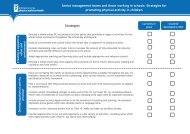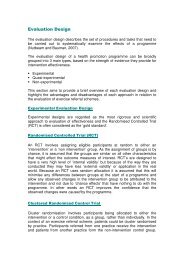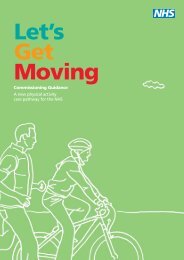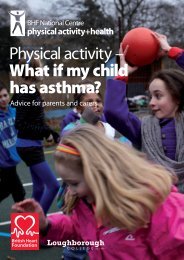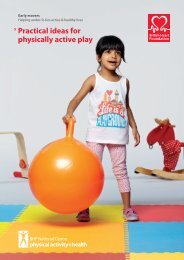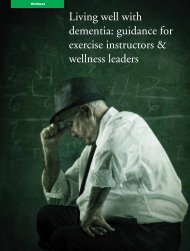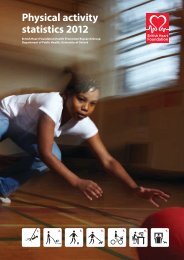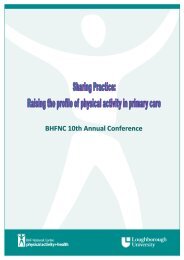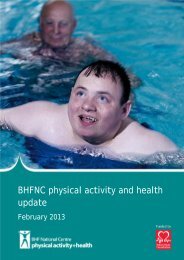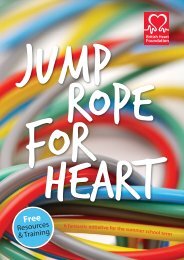Making the case for physical activity - BHF National Centre ...
Making the case for physical activity - BHF National Centre ...
Making the case for physical activity - BHF National Centre ...
Create successful ePaper yourself
Turn your PDF publications into a flip-book with our unique Google optimized e-Paper software.
Evidence Briefing9Reducing health inequalitiesand improving wider factors ofhealth and wellbeingThe Marmot Review (2010) highlighted curren<strong>the</strong>alth and social inequalities across England andrecommended policy objectives, such as healthystandard of living, fair work <strong>for</strong> all and giving children<strong>the</strong> best start in life, to help reduce inequalitiesacross <strong>the</strong> life course (42) . The role <strong>physical</strong> <strong>activity</strong> canplay in reducing some of <strong>the</strong>se health inequalities issummarised below.Social inequalitiesThere is known to be a social gradient associatedwith healthy lifestyles, including levels of <strong>physical</strong><strong>activity</strong>, with those in higher socio-economicgroups experiencing healthier and longer lives thanthose in more deprived areas. If health inequalitieswere reduced:• 285 million years of healthy life could be gainedif everyone experienced <strong>the</strong> same rates of illness,disability and death seen in <strong>the</strong> 10% of <strong>the</strong> leastdeprived areas (42) .• 2.3 million years of life could be saved and 67,000fewer deaths experienced in <strong>the</strong> working agegroup (age 30 to 59) if <strong>the</strong> mortality rates fromo<strong>the</strong>r classes were <strong>the</strong> same as that of <strong>the</strong> ‘highermanagerial and professional’ class (42) .Giving children <strong>the</strong> best start in life andmaximising <strong>the</strong>ir potential• During infancy, <strong>physical</strong> <strong>activity</strong> can have apositive impact on motor skills and cognitivedevelopment (43) .• In pre-schoolers, <strong>physical</strong> <strong>activity</strong> is associatedwith improved measures of psychosocial health andmotor skills development (43) .• While <strong>the</strong>re is limited evidence about how well<strong>physical</strong> <strong>activity</strong> levels during childhood relatesto <strong>physical</strong> <strong>activity</strong> levels during adulthood, itis still important to promote healthy behavioursthroughout <strong>the</strong> early years, childhood andadolescences (44, 45) .<strong>Making</strong> <strong>physical</strong> <strong>activity</strong> a priority



